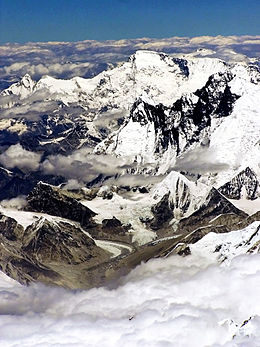Etymology of Tibet
It is today mostly under the sovereignty of the People's Republic of China, primarily administered as the Tibet Autonomous Region besides (depending on the geographic definition of the term) adjacent parts of Qinghai, Gansu, Yunnan, and Sichuan.
[1] The western name, “Tibet” is, however, much older: it was recorded in the 13th century by Giovanni da Pian del Carpine and William Rubruck, as Tebet.
Rolf Stein (1922) explains, The name Tibetans give their country, Bod (now pronounced Pö in the Central dialect, as we have seen), was closely rendered and preserved by their Indian neighbours to the south, as Bhoṭa, Bhauṭa or Bauṭa.
It has even been suggested that this name is to be found in Ptolemy and the Periplus Maris Erythraei, a first-century Greek narrative, where the river Bautisos and a people called the Bautai are mentioned in connexion with a region of Central Asia.
[3]Christopher Beckwith agrees that Ptolemy's geographic reference to the "Bautai – i.e., the "Bauts"" was "the first mention in either Western or Eastern historical sources of the native ethnonym of Tibet".
He compares the 4th-century historian Ammianus Marcellinus describing the Bautai living "on the slopes of high mountains to the south" of Serica with contemporaneous Chinese sources recording a Qiang people called the Fa 發, anciently "pronounced something like Puat" and "undoubtedly intended to represent Baut, the name that became pronounced by seventh-century Tibetans as Bod (and now, in the modern Lhasa dialect, rather like the French peu).
Modern Xizang (Chinese: 西藏; pinyin: Xīzàng; Wade–Giles: Hsi-tsang) "Western Tsang" now specifies the "Tibet Autonomous Region".
吐蕃 Tufan/Tubo is first recorded in the Old Book of Tang (dated 945 CE) describing the Tibetan King Namri Songtsen (Gnam-ri-slon-rtsan) sent two emissaries to Emperor Yang of Sui in 608 and 609.
[27] The Chinese neologism Tǔbó 圖博 (written with tǔ 圖 "drawing; map" and bó 博 "abundant; plentiful") avoids the problematic Tǔfān pronunciation, and is used by authorities such as the Central Tibetan Administration.
But before long, on the testimony of a Tibetan ambassador, the Chinese started using the form T'u-fan, by assimilation with the name of the T'u-fa, a Turco-Mongol race, who must originally have been called something like Tuppat.
At the same period, Turkic and Sogdian texts mention a people called 'Tüpüt', situated roughly in the north-east of modern Tibet.
This compound of xi 西 "west" and zàng 藏 "storage place; treasure vault; (Buddhist/Daoist) canon (e.g., Daozang)" is a phonetic transliteration of Ü-Tsang, the traditional province in western and central Tibet.
This definition excludes the former domains of the Dalai Lamas in Amdo and eastern Kham which are part of Qinghai, Gansu, Yunnan, and Sichuan.
The distribution of Amdo and eastern Kham into surrounding provinces was initiated by the Yongzheng Emperor during the 18th century and has been continuously maintained by successive Chinese governments.
[33] Western scholars such as anthropologist Melvyn Goldstein exclude Amdo and Kham from political Tibet: A modern nation-state usually has clearly defined borders at which one government's authority ceases and that of another begins.
[34] Rob Gifford, a National Public Radio journalist, said that in 2007, the region sometimes known as "ethnographic Tibet", which includes sections of Gansu, Qinghai, and Sichuan that surround the TAR, has greater religious freedoms than the TAR since the authorities in Beijing do not perceive the Tibetan populations in the areas as having the likelihood to strive for political independence.
There was no inscription on the stone, and when unthinkingly I made a movement to look for writing on the Tibetan side, the Chinese officials at once stepped in front of me and barred the road to Tibet.

